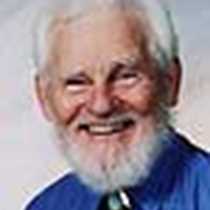Astoria
Last night we traveled from the Bridge of the Gods above Bonneville Dam to the Megler Bridge near the mouth of the Columbia River. Our last full day on the Sea Bird began at the refueling station in Astoria, but by sunrise, we had docked near the Maritime Museum on the Astoria waterfront, the tide rising following an eclipsed full moon. After we broke our overnight fast, we visited the museum, one of the finest in the West complete with Coast Guard and fishing vessels, sailing ships, marine equipment, and a gift shop and book store. At the dock we saw gulls feeding on spawned-out herring and cormorants drying their wings.
Overcast skies and foggy conditions accompanied us on our bus trip to Fort Clatsop, giving us hope of seeing Roosevelt elk. As we crossed the Young’s Bay Bridge, we observed the rising tide once more, higher than we’d expected, and rafts of American coots and bay ducks. As we broke through an opening in the trees lining the road to Fort Clatsop, we did indeed see a large elk herd, bedded down in a meadow. Huge Sitka spruce, Douglas fir, western hemlock, and a few grand fir greeted us at Fort Clatsop National Memorial as did light rain. We were fortunate to find a group of school children visiting the site; their presence brought out a re-enactor who demonstrated an 1795 Springfield rifle loading and firing, a weapon that Lewis and Clark would have known well.
After lunch on the Sea Bird, some of us headed for the Astoria Column to climb to the top and fly toy gliders in the rain while others viewed the expedition landscape, only partially obscured by distant clouds and rain: Tongue Point (Point William to the Corps of Discovery), Cape Disappointment, Lewis and Clark River, and Young’s Bay. Other guests toured the town of Astoria while a mere handful of us visited the Peter Iredale wreck on the beach in Fort Stevens State Park. The beach comers barely made it back to the ship before the Sea Bird headed for the Columbia River Bar for a brief view of the whitewater at the second most dangerous bar on the planet.
As the light began to fade, we turned east toward Portland. The guests gathered in the lounge for a farewell cocktail hour, enhanced by steamed clams, followed by a farewell dinner. The rest is memory.
Last night we traveled from the Bridge of the Gods above Bonneville Dam to the Megler Bridge near the mouth of the Columbia River. Our last full day on the Sea Bird began at the refueling station in Astoria, but by sunrise, we had docked near the Maritime Museum on the Astoria waterfront, the tide rising following an eclipsed full moon. After we broke our overnight fast, we visited the museum, one of the finest in the West complete with Coast Guard and fishing vessels, sailing ships, marine equipment, and a gift shop and book store. At the dock we saw gulls feeding on spawned-out herring and cormorants drying their wings.
Overcast skies and foggy conditions accompanied us on our bus trip to Fort Clatsop, giving us hope of seeing Roosevelt elk. As we crossed the Young’s Bay Bridge, we observed the rising tide once more, higher than we’d expected, and rafts of American coots and bay ducks. As we broke through an opening in the trees lining the road to Fort Clatsop, we did indeed see a large elk herd, bedded down in a meadow. Huge Sitka spruce, Douglas fir, western hemlock, and a few grand fir greeted us at Fort Clatsop National Memorial as did light rain. We were fortunate to find a group of school children visiting the site; their presence brought out a re-enactor who demonstrated an 1795 Springfield rifle loading and firing, a weapon that Lewis and Clark would have known well.
After lunch on the Sea Bird, some of us headed for the Astoria Column to climb to the top and fly toy gliders in the rain while others viewed the expedition landscape, only partially obscured by distant clouds and rain: Tongue Point (Point William to the Corps of Discovery), Cape Disappointment, Lewis and Clark River, and Young’s Bay. Other guests toured the town of Astoria while a mere handful of us visited the Peter Iredale wreck on the beach in Fort Stevens State Park. The beach comers barely made it back to the ship before the Sea Bird headed for the Columbia River Bar for a brief view of the whitewater at the second most dangerous bar on the planet.
As the light began to fade, we turned east toward Portland. The guests gathered in the lounge for a farewell cocktail hour, enhanced by steamed clams, followed by a farewell dinner. The rest is memory.




